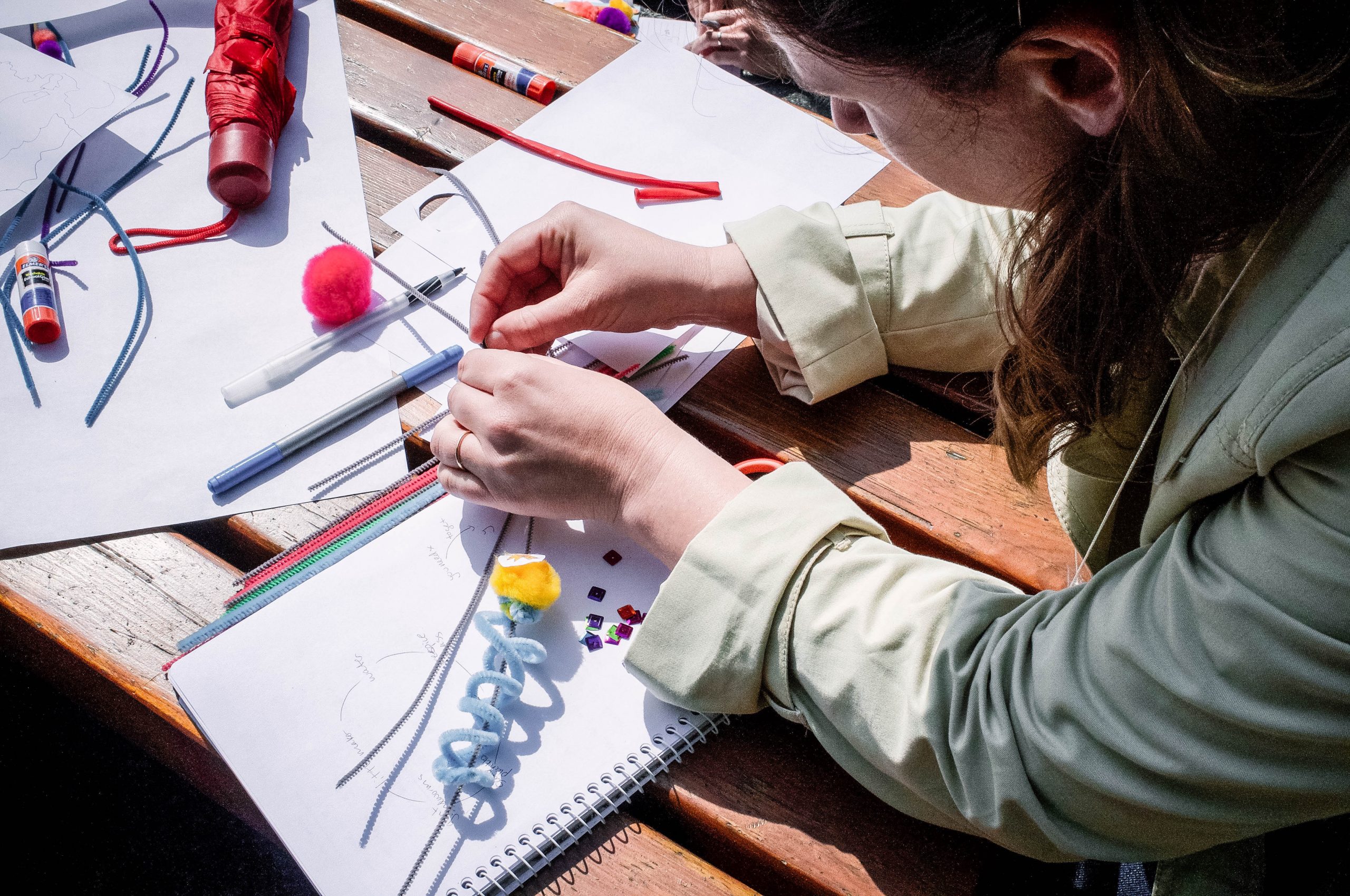
13 Jun DHSI: Thinking Like a Designer

Thinking like a designer means a lot of sketching.
I just came back from the Digital Humanities Summer Institute (DHSI) at the University of Victoria where I attended the course “Visualizing Information: Where Data Meets Design” taught by Aimée Knight. In this course, we learned how to “think like a designer,” which I was worried about because design has never been my strong suit. My own mother once walked into my apartment, looked around, and said “Elizabeth, I’m worried you don’t have good taste.” Because I was in the midst of getting my PhD in English I was able to tell her that “taste” is such an obvious social construction that her comment barely merited a response, and what is considered “good taste” is just a historical accident used to police class distinctions and feed our juggernaut of a consumerist society. Then I bought some new curtains.
Fortunately at DHSI, thinking like a designer did not mean avoiding garish colors or subscribing to a Tufte-like minimalism in all things. This course was much more profound. Thinking like a designer meant putting story first and keeping audience always in mind. Some of us who were taking the course had brought data sets that we knew we wanted to visualize, but it was bracing and terrifying to be asked why. We had to articulate research questions first, before visualization. Instead of jumping into a tool workshop, we had to consider what our visualizations were actually going to argue and accomplish.

Meagahn Brown (of the Folger Shakespeare Library) visualized a collection of early modern recipes with pompoms and pipe cleaners.
But visualization is an iterative process, and knowing what questions we were hoping to answer with our figures was only the beginning. Visualization is also a means of discovery. Even when you suspect there might be a particular kind of story in your data, you have to play around with it for a while before that story comes clear. In this course we used play a means of thinking through a problem. We drew on paper, on the chalk board, built 3D representations of our data out of pipe cleaners and sequins, and, yes, used Gephi, Timeline JS, Google MyMaps, and Tableau.
I’ve returned with the seeds of a “data storytelling” workshop to propose for fall semester, but in the meantime let me leave you with some of the most helpful materials and concepts from the DHSI course:
- Rahul Bhargava’s data and storytelling worksheets. These “finding a story worksheets” help you drill down into the stories you can tell about your data. Not everything has to be a map or a timeline. You can use data to find compelling individual stories. You can explain “factoids” or compare two aspects of your data, or even tell a personal story in or about your data.
- Andrew Abela’s chart chooser. This flowchart (interactive version here) helps you select what kind of chart would be best for the kind of data you have.
- Aimée Knight’s concept of dat(a)ctors. She argues that data visualizations can become more than just beautiful information, but actors in their own right that prompt the audience to do something in the world.
So get started thinking about what data sets you might have or want to work with, and meet me in the fall to discuss research questions, audience, and storytelling!
[simple-author-box]



Sorry, the comment form is closed at this time.